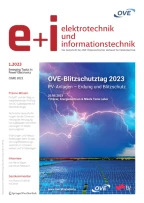Um dem Trend nach immer kleineren und leistungsfähigeren Produkten Rechnung zu tragen, werden in der gesamten Elektronikindustrie große Anstrengungen unternommen. Platzeinsparungen ließen sich dabei in einem ersten Schritt durch die Miniaturisierung der verwendeten Bauelemente erreichen. Diese Strategie führte bei aktiven Bauelementen zur Entwicklung und zum Einsatz von Chip Scale Packages (CSPs) und Flip Chips. Seitens der passiven Bauelemente erfolgte eine Größenreduktion bis zur Bauform 0201 (0,6 × 0,3 mm) und aktuell sogar 01005 (0,4 × 0,2 mm). Eine weitere signifikante Miniaturisierung dieser Bauelemente scheint nun aus technischen und wirtschaftlichen Gründen schwierig. Eine attraktive Lösung stellt in diesem Bereich die Integration von aktiven und passiven Bauelementen in die Leiterplatte dar. Neben dem offensichtlichen Vorteil der Platzersparnis auf der Oberfläche der Leiterplatte führt diese Technologie zu geringeren Bestückungskosten, gesteigerter Ausfallssicherheit aufgrund der Reduktion der Anzahl von Lötverbindungen und verbesserter Signalintegrität. Ziel dieses Beitrages ist es, einen technologischen Überblick über die vielfältigen Möglichkeiten der Herstellung von Leiterplatten mit eingebetteten aktiven und passiven Bauelementen zu geben. Verschiedene Herstellungsverfahren (Siebdruck, Ätztechniken, Inkjet) und Materialien für Widerstände und Kondensatoren werden dabei ebenso beschrieben wie die erreichbaren Toleranzen und die Langzeitstabilität dieser Bauelemente. Im Bereich der aktiven Bauelemente behandelt dieser Beitrag sowohl Aspekte zur Auswahl geeigneter Vormaterialien für die möglichst stressfreie Einbettung von gedünnten Halbleiter-ICs in Multilayern als auch die angewandte Verbindungstechnik und die damit verbundenen Anforderungen an den Halbleiter. Weiters wird auf die erforderliche Bestückungstechnik für die Platzierung der ultradünnen ICs auf großen Fertigungsformaten eingegangen.
The common trend towards smaller and more powerful products causes great efforts in the whole electronic industry. In a first step space savings have been realized by using miniaturized components for assembly. In the area of active components this strategy leads to the development and the application of chip scale packages (CSPs) and flip chips. On the part of passive components a size reduction down to housings like 0201 (0.6 × 0.3 mm) and currently even 01005 (0.4 × 0.2 mm) has been done. It does not seem to be promising to follow up that direction because of technical and economical reasons. An attractive solution in this field could be the integration of active and passive components into the printed circuit board (PWB). In addition to the most obvious advantage of space savings on the surface of the PWB this technology leads to lower assembly costs, better reliability because of the reduced number of solder joints and a better signal integrity. In this paper the authors present a technical overview of the various ways to produce printed circuit boards with embedded active and passive components. Various processes (screen printing, etching, inkjetting) and materials for resistors and capacitors are described as well as reachable tolerances and the reliability of these components. In the area of active components the paper deals with the aspects of choosing the proper raw material to embed thinned dies as stress-free as possible into PWBs as well as the adequate interconnection technology and also the requirements regarding the surface of the die. In addition to that the needed assembly technology for the placement of these ultra thin dies on big production formats is mentioned.
Literatur
Bauer, W., Purger, S. (2003): Integration aktiver und passiver Bauelemente in die Leiterplatte. e&i 2003, H.6: a11–a13.
Calvert, P. (2001): Inkjet printing for materials and devices. Chem. Mater., 2001, 13: 3299–3305.
Chinoy, P., Langlois, M., Schemenaur, J. (2002): High ohmic value embedded resistor material. Circuitree, March 2002.
HIDING DIES: http://www.hidingdies.net/.
Sirringhaus, H., et al (2000): High-resolution inkjet printing of all-polymer transistor circuits. Science, 2000, 290: 2123–2126.
Author information
Authors and Affiliations
Rights and permissions
About this article
Cite this article
Bauer, W., Moderegger, E. & Kriechbaum, A. Einbettung aktiver und passiver Bauelemente in mehrlagige Leiterplatten. Elektrotech. Inftech. 123, 101–109 (2006). https://doi.org/10.1007/s00502-006-0319
Issue Date:
DOI: https://doi.org/10.1007/s00502-006-0319
